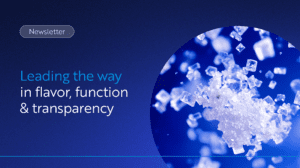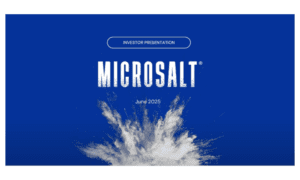Kidney stones cause intense, gnawing pain, so it pays to do everything you can to prevent them
Key takeaways:
- Almost half a million ER visits each year are due to kidney stones
- 70% of kidney stones are caused by calcium calculi
- The incidence of kidney stones has increased in the last decade
- High salt intake is a major risk factor for the formation of calcium calculi
- Restricting dietary salt reduces the risk of kidney stones
Excruciating pain from kidney stones sends close to half a million Americans to the ER each year. While kidney stones can be caused by several different factors, calcium deposits account for up to 70% of cases. Recent studies have linked high levels of dietary sodium to a higher incidence and recurrence of kidney stones. At the same time, limiting salt intake can help prevent kidney stones.
What are kidney stones?
Kidney stones, (renal stones, renal calculi, or nephrolithiasis) are hard deposits of minerals or salts that form in the kidneys. The stones can be located in any part of the urinary tract, from the kidneys to the bladder. They generally affect more men than women.
What causes kidney stones?
Kidney stones occur when urine becomes overconcentrated with minerals, oxalates, and uric acid, and there’s not enough fluid to dilute it. Stones may also occur when the urine lacks substances that prevent mineral particles from sticking together. Up to 70% of kidney stones are caused by an accumulation of calcium in the urine.
Are kidney stones painful?
What many people don’t know is that you can have kidney stones without experiencing any pain. The agony that’s usually associated with this condition only occurs when a stone is large enough to cause a blockage. When that happens, the pain can be excruciating, occurring in waves that may last for up to an hour. The pain starts in the lower back, radiates to the groin, and may fluctuate in intensity. Other symptoms include fever, bleeding, nausea, and vomiting.
Can kidney stones kill?
In very rare cases, untreated kidney stones can be deadly. A study conducted in England and Wales from 1999 to 2013 reported a total of 1,954 deaths from kidney stones, with a higher incidence in women than men.
There’s no doubt, then, that kidney stones are something you want to avoid. And cutting back on salt is one simple way to do just that.
The link between dietary sodium and kidney stones
While dietary sodium plays some key roles in the body, excessive consumption has been linked to hypertension, cardiovascular disease, and other serious health concerns. Limiting your intake of dietary sodium can go a long way toward preventing these issues, including kidney stones.
High levels of calcium in urine are a risk factor for kidney stones
Studies have shown that eating too much salt can cause hypercalciuria (high levels of calcium in the urine). In fact, an increased salt intake of 6 mg per day may cause a 40-mg-per-day increase of calcium in the urine. And that can lead to the formation of kidney stones.
Reducing sodium intake reduces risk of kidney stones
There is some good news, however. Just as eating too much salt can increase your risk of kidney stones, cutting back on dietary sodium can decrease your risk. In fact, scientists were able to establish a relationship between sodium intake and kidney-stone risk as far back as 1959. And studies through the years have shown that cutting back on salt can correct hypercalciuria.
Salt reduction leads to better kidney-stone outcomes
In addition to reducing the risk of forming kidney stones, a low-sodium diet may also lead to better outcomes for people who already suffer from them. One study showed that lower urinary calcium levels reduce the chances of kidney stone recurrence in people who are genetically inclined to form kidney stones. In this study, participants adopted a DASH diet, which has very little salt.
So the evidence is clear that helping prevent kidney stones is just one more benefit of a low-salt diet. But there is more you can do to reduce your risk.
3 more ways to avoid kidney stones
Of course, limiting your sodium intake isn’t the only way to reduce your odds of forming kidney stones. Here are three more effective strategies to try.
1. Drink more water
Concentrated urine contributes to the formation of kidney stones. Staying hydrated – especially on hot days – can ensure that your urine is always well-diluted.
2. Eat less meat
Animal proteins contribute to increased levels of uric acid, which in turn increases the risk of kidney stones.
3. Make sure you get enough calcium
Falling short on dietary calcium can trigger the formation of kidney stones. Adults need to consume 1,000-1,200mg of this key mineral daily.
Combined with proper hydration and the other strategies mentioned above, reducing dietary sodium intake can both reduce one’s risk of developing kidney stones and improve outcomes for people who already have them. So what’s the easiest way to cut back on salt? It could be…eating salt. MicroSalt®, that is.
MicroSalt® can lower your risk for kidney stones
Looking for a no-hassle way to slash your sodium intake and reduce your risk of kidney stones? MicroSalt® crystals give you the same great taste as regular salt but only half the sodium. The particles are 100 times smaller and have superior adhesion properties, ensuring that you get a full burst of flavor while eating a lot less salt.
Contact MicroSalt® today with any questions
We’re creating a new way to enjoy food, where great taste and good health go hand-in-hand. As the proud winner of the P&G Alumni Network’s 2021 Star Entrepreneur Award and the 2022 GHP Fitness and Nutrition award for Sodium Reduction Technology Provider of the Year, MicroSalt® is here to help make low-sodium healthy eating – and healthy living – a reality. Simply contact us via our website, connect with one of our international offices, or call 1-877-825-0655 to learn more.




